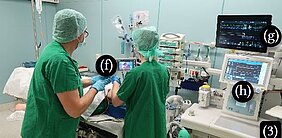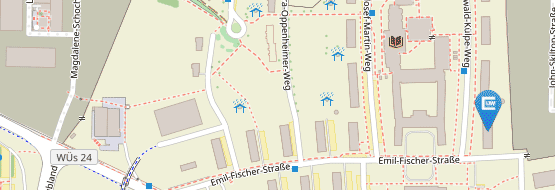Neue Publikation in Computer-Supported Cooperative Work and Social Computing (CSCW)
15.03.2023Anna Hohm, Jörn Hurtienne und Tobias Grundgeiger vom Lehrstuhl Psychologische Ergonomie haben zusammen mit Oliver Happel von der Klinik und Poliklinik für Anästhesiologie, Intensivmedizin, Notfallmedizin und Schmerztherapie des Universitätsklinikums Würzburg einen Artikel mit dem Titel “When the Beeping Stops, you Completely Freak Out” – How Acute Care Teams Experience and Use Technology publiziert.
Der Artikel beschreibt eine qualitative Studie über die Erfahrung die Aktumediziner:innen in der Interaktion mit Technik erleben und zeigt neue Zugänge für das Design von Technologie für die Akutmedizin auf. Der Artikel ist open access publiziert und erscheint in der April-Ausgabe der Proc. ACM Hum.-Comput. Interact.
Anna Hohm, Oliver Happel, Jörn Hurtienne, and Tobias Grundgeiger. 2023. “When the Beeping Stops, you Completely Freak Out” – How Acute Care Teams Experience and Use Technology. Proc. ACM Hum.-Comput. Interact, 7, CSCW1, Article 114 (April 2023), 29 pages, https://doi.org/10.1145/3579590
Abstract: Technology use in acute care has so far been studied with a predominant focus on safety and efficiency rather than the experience of acute care staff. In the present paper1, we report a qualitative study including 130 hours of participant observation on acute care teams and retrospective interviews with nine anesthesiologists on their experiences with technology. Our approach is theoretically guided by four modern HCI perspectives, namely psychological need satisfaction, activity theory, embodied interaction, and media equation theory. We analyzed the interview and observation data using a reflexive thematic analysis and identified four themes. Technology as necessary (evil) describes the pervasiveness of technology and how acute care teams depend on technology. While technology as second patient covers the additional load for anesthesiologists on a functional and emotional level, technology as problem solver and safety net highlights relieving aspects of technology use. Technology as artificial limb focuses on so-called transparent tools that extend the body and capabilities of users. We then discuss the identified themes concerning the previously presented theories. Based on our findings and theoretical perspectives, we report general insights for research and design in acute care, such as the benefits of mixed methods or the importance of the gut feelings of experts. Finally, we propose possible directions for future work, such as developing a UX questionnaire adapted to the context of safety-critical domains, such as acute care.



